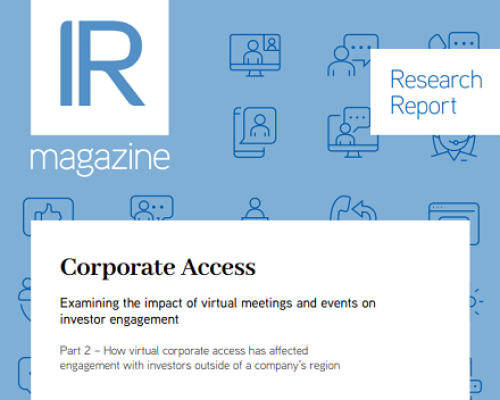After a staggering 77 percent year-over-year increase in mentions of artificial intelligence (AI) in Q1’s earnings calls, the trend doesn’t seem to be going anywhere.
As companies share their plans to integrate the technology into their business, they are met with bated breath by ever-perceptive investors (and, increasingly, an ever-perceptive ChatGPT).
Meanwhile, rising interest doesn’t always correlate to rising stock prices. Without a clear path for the future, adverse investor reactions could risk having a negative impact on a company’s valuations. In today’s markets, investors’ expectations from technology firms have evolved. Particularly for companies that aren’t pure AI plays, demonstrating the discernment of management (and its ability to achieve higher margins) is crucial.
Under the microscope of margin-driven investors, a company’s AI strategy risks being met with skepticism if investors perceive:
- Unclear business models and growth paths
- High entry costs with long payback periods
- Potential technological limitations
- Insurmountable regulatory hurdles
- Misalignment in product-market fit and scalability.
Combatting that perception is critical. To proactively mitigate against investor skepticism – and communicate AI strategies that build trust with investors – companies should work to ensure what those investors are perceiving isn’t risk.
- Opportunity: Clearly describe the profitability and growth outlook AI presents for the company, being sure to include specifics on the evaluation process for potential investments (timelines, implementation strategies and capital requirements). Consider using tools of foresight, including scenario planning or discounted cash flow analysis, to underscore management’s rigor.
- Expertise: Highlight the expertise of the team responsible for implementing the AI investment and how it is seasoned to navigate any of the associated risks, including those related to technology, regulation and adoption.
- Discipline: Share how the company manages risk related to its capital allocation decisions, maintains financial flexibility and diversifies its investments.
- Competence: Showcase a track record of success by providing examples of past investments that proved to be prudent bets (pointing to how they generated above-expected returns), thereby building credibility and demonstrating the company’s ability to make smart decisions and execute on investments.
- Refinement: Update the company’s capital allocation framework to include strategic research and development, focusing on generative AI investments that drive growth and competitiveness in the long term, giving investors insight into the company’s commitment to these initiatives and bolstering their confidence in the payback period.
- Alignment: Finally – and perhaps most importantly, in light of growing investor demands for heightened management discipline and margins to match – reiterate the alignment of capital allocation decisions with the business’ overall strategy and long-term financial goals.
It’s important to recognize that the impact of AI on companies will vary significantly across sectors, industries and individual businesses; as with any transformative technology (legacy or fledgling), there’s no one-size-fits-all approach. Some businesses will inevitably be affected more than others, making it crucial for companies to carefully evaluate their AI strategies and consider the specific implications of this technology on their operations, market position and overall growth trajectory.
AI may not be the make-or-break technology for every company; its relevance and potential benefits will depend on each organization’s unique circumstances and industry dynamics. As regulatory and market conditions catch up with generative AI’s development, different sectors will inevitably face unforeseen challenges.
But by adhering to these guidelines, companies can begin to lay a foundation of trust and confidence with investors about their generative AI strategies, ensuring that – no matter what unforeseen events unfold – their capital allocation decisions are maximizing shareholder value and supporting the company’s sustained success into an AI-integrated future.
This approach will ultimately elevate a company’s value in the eyes of investors and, by extension, the value of the elevated IRO.
Mark Hayes is a partner at Breakwater Strategy










